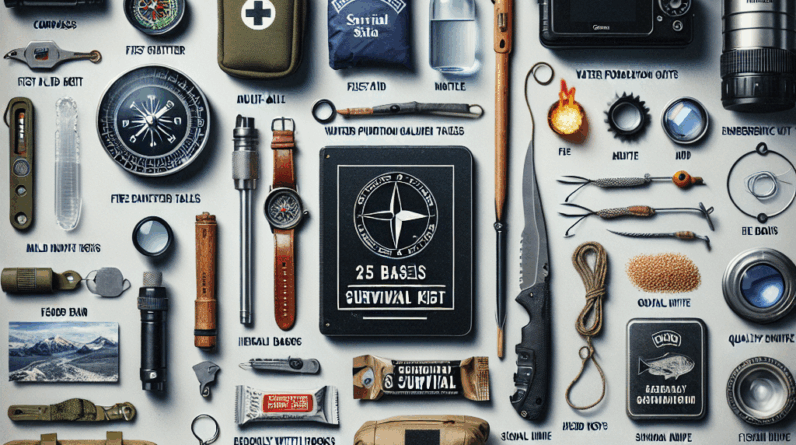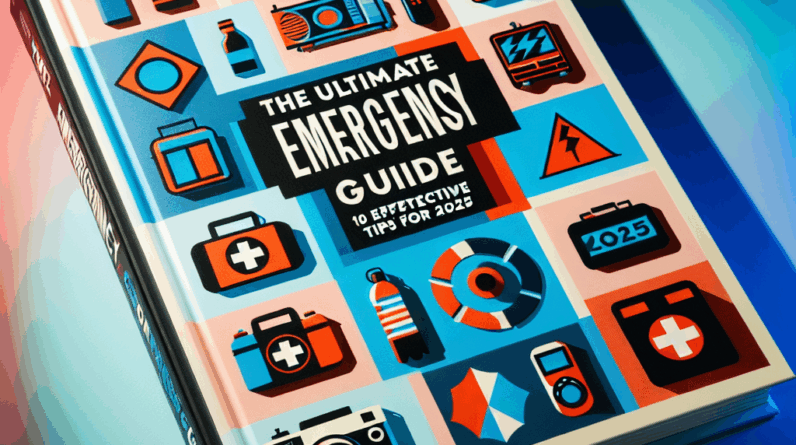Having an emergency kit in your car is essential for handling unexpected situations effectively. Whether you face a breakdown, severe weather, or other roadside emergencies, being prepared can significantly ease the stress and danger involved. Here’s how to ensure your vehicle is always ready for whatever the road throws your way.
Emergency Kit Essentials
From personal experience, I know the importance of keeping an emergency kit in your vehicle. You can never predict when you’ll encounter a situation that requires quick thinking and immediate resources.
# Food and Water
Start by packing non-perishable snacks such as protein bars, nuts, and dried fruits. These items don’t spoil easily and will provide you with necessary nutrients if you’re stranded for an extended period. Always have several water bottles in your car, and remember to replace them every few months to prevent any potential messes from leaks or bursts. Adding a portable water filter or purification tablets can be a lifesaver if you need to drink from an uncertain water source.
# First Aid Supplies
No emergency kit is complete without a first aid kit. Even if you think you won’t need it, it’s better to be safe than sorry. Stock it with band-aids, antiseptic wipes, gauze pads, and pain relievers. Include a guidebook on basic first aid procedures to help manage minor injuries until professional help is available. Regularly check and restock your first aid kit to ensure everything is up to date and ready to use.
# Tools and Supplies
A basic toolkit with screwdrivers, pliers, and a wrench is crucial. Add items like duct tape, zip ties, and a flashlight with extra batteries—these can be incredibly useful in various unexpected situations. Also, consider including a basic tire repair kit to handle flat tires when immediate professional help isn’t available.
Regular Maintenance Checks
Maintaining your car in top condition is essential for preventing emergencies before they happen.
# Oil Changes
Regular oil changes are crucial. It’s recommended to change your oil every 3,000 to 5,000 miles to keep your engine running smoothly. Regularly check your oil level and consider using an oil life monitor to remind you when it’s time for a change.
# Tire Condition
Ensure your tires are properly inflated and regularly check for wear and tear. Rotate your tires as needed and replace them if the tread is low. Keeping an eye on your tires’ condition is vital for safe driving.
# Battery Health
Regularly inspect your battery for corrosion and ensure it’s securely mounted. Have your battery tested periodically, especially before long trips, and replace it every three to five years as a preventive measure.
Knowing Emergency Contacts
It’s crucial to have a list of emergency contacts readily available.
# Family and Friends
Keep a list of family and close friends to contact in emergencies. Share your location with someone you trust and keep your contacts updated.
# Roadside Assistance
Having a roadside assistance plan can be a lifesaver. Ensure you know what services your insurance provides and keep the contact information easily accessible.
# Emergency Services
Familiarize yourself with how to contact local police, fire departments, and hospitals. Keep these important numbers in your glove compartment and ensure your phone is always charged when traveling.
Fuel Management
Properly managing your vehicle’s fuel supply is critical for avoiding emergencies related to running out of gas.
# Keep Your Tank Full
Always refill your tank before it falls below a quarter full. This practice helps avoid the stress of running low on fuel, especially in unfamiliar or remote areas.
# Plan Routes Accordingly
Use navigation apps to plan your routes, ensuring you know the locations of gas stations along the way. This planning is particularly important when traveling to less populated areas.
# Emergency Fuel Options
Be aware of emergency fuel delivery services in your area. Knowing your vehicle’s fuel range can also help you manage long trips more efficiently.
Planning Ahead for Long Trips
Proper preparation is key to avoiding issues on extended road trips.
# Checklists for Long Drives
Create and maintain a checklist for long drives that includes all essentials. Regularly update and refer to this list to ensure you don’t forget anything important.
# Route Planning
Plan your route with scheduled stops for rest and refueling. Keep informed about current road conditions to avoid delays and hazards.
# Emergency Travel Insurance
Consider purchasing emergency travel insurance that provides roadside assistance and other benefits, offering peace of mind throughout your journey.
Frequently Asked Questions
# 1. What should I include in my car’s emergency kit?
Your emergency kit should have non-perishable food, water, a first aid kit, essential tools, a flashlight, a blanket, and a portable phone charger.
# 2. How often should I perform maintenance checks on my car?
Conduct basic checks monthly and professional maintenance every six months to a year, depending on how much you drive.
# 3. What should I do if I find myself stranded?
Stay calm, ensure your vehicle is off the roadway, turn on your hazard lights, and call for help. Remain inside your vehicle if safety permits.
# 4. How can I avoid running out of gas during a trip?
Refuel when your tank is at a quarter full and plan your travel route to include frequent gas stations.
# 5. Is there any specific emergency service I should consider having?
Yes, joining a roadside assistance program is advisable; they offer valuable help during various car-related emergencies.




